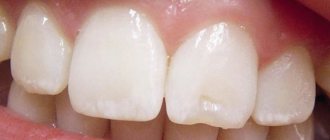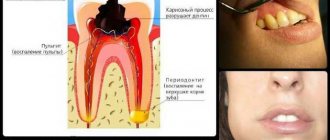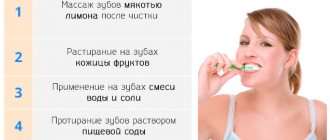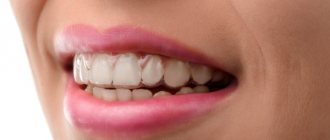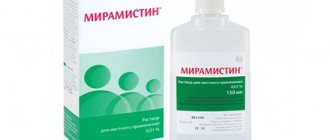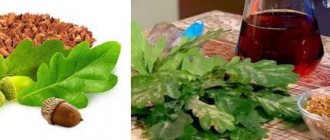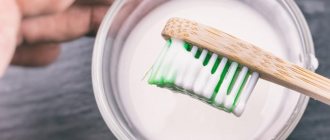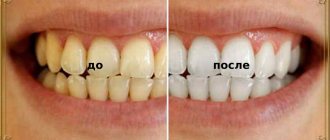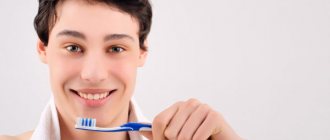People knew that they needed to brush their teeth after eating several thousand years ago. But until about the 20th century, only a few people could boast of healthy teeth. Most of the population did not pay due attention to oral hygiene. And in the arsenal of those who did take care of their teeth, there were not many cleaning devices.
Today, stores offer a variety of oral care devices and products. However, most people only use a toothbrush, although flossing also has its fans. According to the Dental Association, a toothbrush can remove about 30-40% of plaque. A regular toothbrush does not remove plaque from interdental spaces and hard-to-reach places. For oral hygiene to be truly effective, it is necessary to use several tools to clean your teeth. One of such devices is the Waterpik irrigator, you can buy it in St. Petersburg or another city in our stores.
Toothbrush
Despite the fact that a toothbrush by itself is not able to completely clean teeth of bacteria and plaque, it should be used daily. The hardness of your toothbrush should match your teeth type. If thin enamel is brushed daily with hard bristles, this will result in big problems with your teeth. It is better to consult your dentist regarding the type of brush hardness. A toothbrush can be used for no more than 3 months, after which it becomes a breeding ground for bacteria and germs.
There are traditional and electric toothbrushes.
Dentists often hear the question - which brush to choose? The answer depends on how much time you spend brushing your teeth. You need to brush your teeth for 3 to 5 minutes, spending time on each tooth. Many people brush their teeth on the go, resulting in little benefit from brushing. An electric toothbrush is better at removing plaque and can clean your teeth in just 2 minutes.
Teeth whitening with vegetables and fruits
The following vegetables and fruits have a whitening effect on tooth enamel:
- banana peel - rub your teeth for 3 minutes and then rinse with water, the procedure must be repeated three times a week;
- strawberries - mash the berries until mushy, apply to a toothbrush and brush your teeth, then perform a similar procedure, but using regular toothpaste, it is enough to do it 2 times a week;
- eggplant - the vegetable is cut into rings and soaked for 3 days in water, changing it daily, then take out the rings and fill them with salt water, press them down with a stone, leave for 10 days, then rinse and dry, set them on fire, and brush your teeth with the remaining ash;
- orange peel and bay leaf - peel the orange peel, rub your teeth with it for two minutes, then apply powdered bay leaf, rinse with water after 5 minutes.
Dental floss
Even the most modern toothbrush cannot get into the spaces between your teeth. But it is in these places that pieces of food get stuck, which then become a habitat for billions of bacteria. If you do not clean food from the interdental spaces, sooner or later caries will form in these places. Dental floss, or floss as it is also called, is a simple and at the same time very effective device for cleaning the spaces between teeth.
In pharmacies you can find various modifications of floss for cleaning teeth. Depending on the width between the teeth, you can select the optimal width floss. Floss can be waxed or unwaxed. Wax-impregnated dental floss is perfect for those who are just starting to use this device. However, non-waxed floss does a better job of cleaning the surface of the tooth. Use dental floss with caution to avoid damaging your gums. Most doctors recommend flossing daily before bed.
Teeth whitening with lemon
Many people know the whitening properties of lemon. It is often used to lighten skin, so it is not surprising that it can also whiten teeth.
- Simply wipe the surface of your teeth with a slice of lemon several times a week.
- After this, you need to rinse your mouth with plain clean water.
On a note! If your teeth are too sensitive, you can use one lemon peel.
In addition, it is recommended to add a few drops of lemon juice to toothpaste before brushing your teeth, which will also give the desired effect.
Description of the irrigator
This modern device is also designed for cleaning interdental spaces and hard-to-reach areas. Its action is to direct a stream of water to areas that require cleaning. An irrigator is quite an expensive thing, but its use can effectively clean teeth from stuck food, plaque and bacteria. Unlike dental floss, a brush for cleaning teeth or a toothpick, it is impossible to damage the gums with an irrigator. Using an irrigator is absolutely safe for enamel and gums. Modern irrigators are the best alternative to all devices for cleaning hard-to-reach places between teeth.
Tooth elixir
Rinsing with dental elixir should be the final stage of cleaning the oral cavity. Just like toothpastes, elixirs are aimed at preventing certain diseases or have a complex effect. The tooth elixir has an antibacterial effect and prevents the formation of tartar. You need to rinse your mouth with tooth elixir for 1-2 minutes.
In order to prevent tartar deposits, you need to have your teeth professionally cleaned by a dentist every six months. Brushing your teeth using ultrasound and other modern methods effectively removes plaque. Professional cleaning also has an aesthetic effect - teeth become whiter.
Reading food labels is a very useful habit. Thanks to the fact that you spend 1-2 minutes studying a particular purchase, you can protect your body from harmful substances entering it.
Have you ever read what is in your toothpaste? If not, then quickly grab a tube and see how you treat your dear and beloved body every day, 2 times a day.
When brushing our teeth, we manage to use 2-4 mg of toothpaste, which includes far from useful substances that the body does not always remove on time. What kind of substances are these?
Fluorine.
It can accumulate unnoticed in tissues and bones for years, and then cause problems with the digestive system and joints, and weaken the immune system.
Sodium lauryl sulfate.
Today, many shampoo manufacturers boast that they don’t have it, but toothpastes have plenty of it and add this substance to improve foaming. Sodium lauryl sulfate increases the sensitivity of gums to food acids and leads to thinning of the enamel.
Antibacterial additives.
Manufacturers consider this a bait, but in reality these additives “kill” both good and bad bacteria.
It is very important to monitor how children brush their teeth, because children are most likely to accidentally swallow large quantities of toothpaste.
What to do? Don't walk around all day with bad breath? How to brush your teeth?
Replacing toothpaste is easy, and this replacement will not harm your health!
Blue or white clay.
Well ground clay is the best tooth powder. Some are wary of clay as a full-fledged substitute for toothpaste, but since ancient times our ancestors have used it. You can buy it in pharmacies and use it for many medical procedures.
Soda + glycerin.
You can easily make your own toothpaste. To do this, you need to take 6 tablespoons of soda, 1 tablespoon of glycerin for thickness, 1 tablespoon of 3% hydrogen peroxide and 5 drops of essential peppermint oil (which will refresh the mouth well); mix all ingredients until smooth and place in a clean jar. Wait a couple of hours and you can use it.
Salt.
Salt not only can effectively clean teeth, it also helps gums heal and removes unpleasant odor. You can use plain table salt or sea salt, which is rich in minerals and trace elements.
Cleaning with salt is no different from the usual procedure; just wet the brush and dip it in salt, which must be fine.
Just like with soda, you can prepare toothpaste - for this you can mix salt and vegetable oil.
Powdered milk.
If you have caries, we highly recommend using milk powder to brush your teeth. It will slow down the formation of tartar and help prevent bleeding gums. It is also perfect for whitening.
Sage + nettle.
Some people prefer to use an infusion of sage and nettle instead of toothpaste. To do this, you need to pour boiling water over the ingredients in equal quantities, let them cool and you can use them. Soak your toothbrush in the broth and clean your teeth.
Activated carbon for whitening.
Grind 1 tablet of activated carbon, put it on a toothbrush and brush in your usual way, you will almost immediately notice that your teeth have become whiter.
Don’t be alarmed that after brushing, the edges of your teeth, and maybe the entire sink, will be black; go over again thoroughly with a toothbrush and water.
Noticing an unsightly plaque on the surface of our teeth, we immediately begin to select a remedy for tartar, which will help us once again shine with a white-toothed smile and not worry about possible diseases of the oral cavity. There is no need to think that stones on teeth are less harmless than caries.
Dental plaque is a hard mineralized layer consisting of bacteria, food debris, and various salts. It can cause, and also simply makes the appearance of teeth extremely unaesthetic. To get rid of plaque, you should visit a professional dental hygienist or use popular advice.
To remove tartar even in hard-to-reach places, specialists have invented special ultrasonic devices intended for professional use by dentists.
During hygienic cleaning, the doctor uses various additional products: polishing gels, rubber bands, solutions, etc.
Ultrasonic cleaning is recognized as the best way to get rid of plaque, as well as prevent its occurrence. Cleaning includes a whole range of procedures aimed at removing plaque itself, hydromassage the gums, coating the enamel, etc.
Consequences of not removing tartar.
All stages are important and serve to improve the condition of the oral cavity:
- Hydromassage of the gums activates blood circulation, makes even small vessels work, saturates the gums with oxygen, and prevents inflammatory processes in them. Thanks to the treatment of this area, the stone will not be deposited in the gum pockets in the future.
- Ultrasonic cleaning fights dental plaque, has a softening effect, and gently and gently removes plaque from the surface. Deposits on the front and back surfaces of teeth, as well as in the interdental and supragingival areas are susceptible to exposure. Professional cleaning devices do not cause discomfort to the patient, so there is no need to be afraid of this procedure.
- The remaining plaque is removed by the Air Flow system. This stage is the most pleasant, you will feel “Arctic freshness” in your mouth, and you can choose the aroma of the drug to your taste.
- Polishing is the most important procedure for preventing the formation of caries. Pastes that are applied to the teeth make their surface perfectly smooth, so plaque will not be able to “catch.”
- The final stage of cleaning is the application of fluoride varnish to the enamel - a protective layer, the main ingredients of which are fluoride compounds and fir balsam. The drug restores the mineral composition and serves as a protective film against the effects of bacteria, acids and plaque.
Dentists advise regularly carrying out ultrasonic teeth cleaning, preferably once every six months, in order to maintain the oral cavity in ideal condition and not bring the teeth to a critical state, when a thick layer of plaque and plaque accumulates on them.
If plaque is not removed in time, it can lead to the development of caries, periodontitis, periodontal disease and other diseases.
Basil leaves as a teeth whitening agent
Basil has not only a whitening effect, but also an anti-inflammatory effect. After a hygienic procedure using it, your mouth feels fresh. Basil can be used for daily brushing of teeth; it does not damage the enamel and, like aloe, is extremely beneficial, positively affecting the health of the gums.
- To whiten your teeth with basil, you need to grind its leaves into a puree.
- Then apply the resulting slurry to a toothbrush and perform the standard procedure.
Another option is to mix mustard oil with dry basil leaves. With regular use of these recipes, you can get a snow-white smile.
In order for the effect after the teeth whitening procedure to last longer, it is necessary to maintain oral hygiene, limit the consumption of coffee and tea, stop smoking, and also maintain a white diet. Its essence lies in the use of ingredients containing protein, fluoride and calcium. These are cottage cheese, porcini mushrooms, fermented milk products, semolina porridge, rice, barley, egg whites, chicken fillet, nuts, bananas, etc. Such a diet will not only help “maintain” a snow-white smile, but will also benefit the entire body.
Writes for you:
poster
Professional products
If you don’t want to spend a lot of money on regular dental cleanings, then you can remove plaque at home using special toothpastes or gels. Not any paste can repel tartar, only one that contains abrasive substances - they remove hard plaque from the surface.
Larisa Kopylova
Dentist-therapist
When choosing a toothpaste, keep in mind an important point: high-quality anti-tartar products should not include two components at the same time - fluoride and calcium carbonate; together, these substances aggressively affect the enamel, thin it and even destroy it.
It is advisable that the paste contains triclosan. This is an antibiotic that will help you suppress the growth of pathogenic microorganisms in the oral cavity and maintain normal microflora.
The most popular brands of toothpaste for removing tartar are the following:
- Lacalut White;
- Glister;
- New pearls;
- Jason;
- Sea Fresh;
- Dabur Carnation;
- President White Plus;
- Blend-a-Med;
- Royal Denta Silver and Sensitive;
- Detartrine (detartrin).
There is no need to constantly use such toothpastes; alternate brushing your teeth with regular toothpaste and anti-plaque paste every 2 weeks.
Another product that can soften tartar, after which it can be easily removed, is Belagel-R. It can also be used for preventive purposes, periodically applying it to the teeth for a few minutes, then rinse your mouth and brush.
Stone softening agent Belagel-R
Step-by-step recommendations for proper teeth brushing
Step #1. Buy a soft toothbrush with nylon bristles. It should be easy to use and have a small enough head to reach most hard to reach areas. Avoid options with “natural” bristles because they can harbor bacteria.
Soft toothbrush with silver nanoparticles Royal Denta Silver Soft
Step No. 2. If your current toothbrush is old and worn out, replace it. The right solution is to regularly get a new toothbrush every four months.
Step #3. Always choose toothpaste with fluoride. Fluoride cleans teeth and strengthens enamel at the same time. If you have additional preferences, find the toothpaste that suits you best.
Step #4. First, use dental floss to remove food from between your teeth and prepare your mouth for the brush and toothpaste.
Method of flossing teeth. A - floss is wrapped around the middle fingers of both hands; B - floss of sufficient length should remain between the fingers (so that the abducted thumbs can touch each other); B - index fingers and thumbs are used to guide the floss; D - floss is carefully placed in the interdental space, wrapped around the tooth in the shape of the letter C and gently moved up and down, cleaning the tooth
Step #5. Squeeze out no more than a coin's worth of toothpaste. Using too much of it creates a lot of foam, which encourages more spitting and finishing the brushing too quickly.
Step #6. Place the bristles at a 45-degree angle to the gum line. Direct them upward or in a circle, but not from one side to the other.
The main stages of brushing your teeth
Step #7. Cleaning should take at least three minutes. Mentally divide your mouth into sections and spend an equal amount of time in each area. This way you won't miss any place.
Step #8. Be sure to brush the front, sides, and back of your teeth. Be mindful of your tongue, just don't press too hard or you risk damaging the tissue.
Step #9. Rinse your mouth thoroughly after brushing.
Step #10. Clean your toothbrush and place it vertically with the head facing up.
Step #11. At this point, you can use mouthwash.
Mouth rinses
Step #12. Repeat the entire process at least twice a day, an hour after meals.
Folk remedies for cleaning and whitening teeth at home.
The media promotes and advertises toothpastes, ultra-innovative toothbrushes, mouthwashes, mouth sprays, etc., assuring people that they improve and strengthen dental health. Tell me, has television ever recommended anything useful? No! In fact, modern dental products only cause harm, so we invite you to familiarize yourself with the alternative safe methods that nature has endowed us with.
Folk remedies
If a person is afraid to use pharmaceutical products, is afraid that they may harm the enamel, or does not trust the quality of the products, then he can use traditional methods of fighting tartar.
Larisa Kopylova
Dentist-therapist
Ordinary fruits, vegetables or various substances that are found in every home will help to gradually soften the stone, and all you have to do is clean it with a brush.
The most popular home recipes are as follows:
- As a healthy chewing gum, you can use a mixture of grated radish and lemon juice. Chew this mixture after every meal. Radish contains tiny abrasive particles, and lemon juice, like any acid, dissolves plaque. Instead of lemon, you can use any citrus.
- Hydrogen peroxide can dissolve tartar, which can then be easily removed with a brush. Wipe your teeth with a cotton pad soaked in peroxide, then rinse your mouth with a gum strengthener. It's no secret that peroxide has whitening properties, so you will not only remove plaque, but also make your teeth a shade whiter.
- You can clean your teeth yourself using baking soda, which acts on the principle of peroxide. Wet your toothbrush and dip it in baking soda, then massage your teeth in a circular motion for several minutes. Then rinse your mouth.
- Few people know that birch sap can perfectly remove tartar. It contains acids and some caustic substances that promote the natural exfoliation of stone and cleans the surface of the teeth without harming the gums and oral cavity. Treat yourself to young spring birch sap, and the nasty stone will not be deposited on your teeth.
Fighting plaque with folk remedies is a long process that requires diligence and perseverance. It is not difficult to carry out the above procedures if desired, but you need to be patient and treat your teeth regularly.
Teeth whitening with hydrogen peroxide
Hydrogen peroxide is popular as an at-home teeth whitening product because it does not contain any hard particles that can scratch enamel. However, it also has certain disadvantages. First of all, they are associated with the possibility of damage to the oral mucosa, which can result in a chemical burn.
To whiten your teeth you need to do the following:
- Rinse your mouth with a glass of water to which 20 drops of hydrogen peroxide have been added. Then rinse your mouth with clean water.
- Dip a cotton ball in hydrogen peroxide and wipe the surface of your teeth with it. Rinse with water.
On a note! Frequent use of hydrogen peroxide to whiten teeth damages their enamel.
Phytotherapy
Many people have mild plaque on their teeth, so they often put off going to the dentist for ultrasonic cleaning or are in no hurry to use professional products for home use. But plaque will not disappear on its own, and in the future it will only take root on the teeth and expand its “habitat” zone. Even thorough brushing of your teeth will not protect you from the appearance of tartar in hard-to-reach places.
- Decoction of linden and sunflower heads, cleared of seeds. Combine the ingredients, add water and leave on low heat for about half an hour. Before brushing your teeth, dip the brush in the broth; You can also rinse your mouth with the decoction. Thanks to the decoction, plaque softens and is separated from the tooth surface.
- Ordinary honey dissolved in warm water helps to cope with plaque. Rinse 2 times a day, morning and evening. Not only will you remove tartar, but you will also ensure that your breath smells good.
- A decoction of horsetail is recognized as a wonderful remedy. Add dried flowers to boiling water and simmer for 10 minutes. Then let the broth brew and use it as a rinse.
- Celandine. To brew it, use the same algorithm as for horsetail. Rinse your mouth with a decoction of celandine every morning and evening before bed. This excellent disinfectant provides protection against plaque and fresh breath, normalizes the microflora of the mouth.
- A softening eucalyptus decoction has universal healing properties: it disinfects the oral cavity, fights tartar and bad breath, and when gargling, cures chronic tonsillitis.
Herbal medicine is extremely effective if you have the initial stage of plaque formation. If you have a problem, schedule a professional cleaning with your dentist. And after cleaning, you can use folk recipes to prevent new stone deposits.
Be sure to take measures to get rid of plaque. Get back healthy teeth, a beautiful smile, good mood and high self-esteem from the knowledge that your snow-white smile enchants and captivates.
Brushing your teeth is a necessary hygiene procedure. It is needed not only for the sake of aesthetic appearance and the absence of an unpleasant odor. The health of the body as a whole largely depends on the cleanliness of the teeth and oral cavity. Of course, modern toothpastes do an excellent job of this task, and there is a wide choice - for every taste. But what if you want something more environmentally friendly and safe?
It turns out that you can clean your teeth using simple folk remedies. Long-forgotten methods of brushing teeth are no worse than toothpastes.
Salt
Salt is an excellent remedy for germs, and as you know, it can also eliminate negative energy. Sea salt is preferable for brushing your teeth, but regular table salt is also quite suitable.
- Place a little less than a teaspoon of salt under your tongue. Wait for it to dissolve;
- Run your tongue all over your teeth and throughout your mouth. The resulting brine solution from salt and saliva will act as a cleanser;
- Use a clean (!) finger to massage the gums;
- Rinse your mouth with water at a comfortable temperature.
Ash
Wood ash can make teeth whiter. To brush your teeth with ash:
- Strain the wood ash through a sieve. The result will be a powder similar to flour;
- Rub the ash into your teeth with your fingers and rinse your mouth with water.
Regular cleaning in this manner is required to achieve the whitening effect. And if you don’t have ash on hand, you can use pharmacy activated carbon instead. To do this, you need to crush one tablet of activated carbon, and just like ash, rub the resulting powder into your teeth and rinse your mouth.
Strawberry and apple
Fruit acid, found in berries and fruits, is an excellent alternative to toothpastes. Strawberries (or strawberries) should be crushed and brushed as if with toothpaste. You can also make powder from rose hips. This powder heals wounds, strengthens gums, and prevents bleeding.
But it’s enough to eat an apple, and after fifteen minutes brush your teeth. Fruit acid will soften plaque on the teeth, and a dry brush can remove it without toothpaste.
Herbs
Another great way to clean your teeth is herbs. Cereals such as oats and wheat are especially suitable for this task. And other medicinal herbs, such as yarrow, nettle, St. John's wort, oregano, thyme and sage, can help them with this. Birch leaves, oak bark, ginger and calamus roots are also useful for cleaning teeth. In the summer, the herbs can simply be chewed in the mouth, and in the winter, collected and dried. You can choose your own “recipe” for brushing your teeth from plants. Of course, you need to know what, when and how to collect, as well as first study the chemical composition of plants. Do not forget that there are also poisonous herbs, be careful.
As you can see, there are many ways to brush your teeth without chemicals. All that remains is to choose something of your own. But, if you have doubts about any folk remedy, consult your dentist first. And remember - your health is in your hands. Take care of yourself.
Need to find a dentist in Yasenevo? Check out the link
From this article you will learn:
- oral irrigator: how to choose,
- irrigator – reviews, rating of the best models,
- irrigator – price for 2020.
The article was written by a dentist with more than 19 years of experience.
An oral irrigator is a device that generates a thin stream of water, which under pressure washes the interdental spaces from food debris and plaque, as well as periodontal pockets. In different models of irrigators, the water stream can be pulsating, contain air microbubbles, or be a regular monostream.
The price for budget models of well-known irrigators or “Waterpik WP-70” starts from 4,500 rubles (for 2020). Thus, for relatively little money you can get a higher level of oral hygiene.
Essential oils for teeth whitening
Essential oils of orange, tea tree, grapefruit, and lemon are suitable for lightening tooth enamel. They do not give quick results; with regular use, they will be noticeable in about six months. But this home remedy for teeth whitening is considered safe and even useful.
To carry out the procedure, apply 2 drops of essential oil to a toothbrush, brush your teeth, and after 15 minutes rinse with water.
Another way is to add 3 drops of essential oil to a glass of water and rinse your mouth before going to bed.
How to choose an oral irrigator –
Below we list the main points that it is advisable to pay attention to when choosing an oral irrigator. Pay special attention to the cleaning technology, i.e. what kind of water jet the irrigator produces, as well as the possibility of repair and the availability of a service center in your city.
- Cleaning technology (features of water jet)
–1)
Monojet – the irrigator generates a continuous thin stream of water. An outdated technology that is inferior in efficiency to the other two.
2)
Pulsating stream – the irrigator generates a thin pulsating stream of water. The pulsations are so short (usually 1200 micropulses per minute) that they are invisible. Pulsation creates micro-hydraulic shocks that allow you to more effectively remove food debris and soft microbial plaque than a monojet does.
3)
Microbubble technology is an advanced technology that allows you to mix water flow and air bubbles. As a result, the water stream will contain a large number of microbubbles. Firstly, when microbubbles explode, they create microhydraulic shocks, which also contribute to more effective removal of food residues and plaque. Secondly, air microbubbles saturate the water with oxygen, which has a bactericidal effect on pathogenic microflora. This is especially important if you have periodontal pockets.
- Types of replaceable nozzles
– some irrigators have universal nozzles, others have whole sets of nozzles for all kinds of cases. In addition to universal ones, there are attachments for cleaning the tongue, for washing periodontal pockets, attachments for cleaning orthodontic structures (braces), attachments for cleaning artificial crowns and bridges, and attachments for cleaning implants.Also, some models have special nasal nozzles that allow you to rinse the nasal cavity with an irrigator, which is sometimes necessary in the treatment of rhinitis (including allergic origin) and sinusitis.
Most manufacturers produce attachments that have different color indicators. This is very convenient, because... Each family member will have a nozzle of its own color, and will never confuse it with other people's nozzles.
- The ability to regulate the pressure of the water jet
- in principle, almost any oral irrigator has such adjustments. This is necessary because You need to start using the irrigator with a small pressure, gradually (from time to time) increasing it. Lower water pressure also allows the waterpik to be used by children and people with sore gums (higher pressure can increase gum bleeding).
- Possibility of service after the warranty period expires
– reviews of oral irrigators are often negative precisely because many cheap models are not repairable. It’s not scary if a defect is discovered during the warranty period (in this case, the broken device is simply replaced with a new one).But if the irrigator breaks down immediately after the warranty period expires, then the non-repairable model can be immediately thrown away, because the service will simply refuse to repair you. You should pay close attention to this point, because... Power surges and too hard water (both of which are the norm for Russia) can affect the operation of the device.
Oral irrigator: price 2020, rating
Below we compared the 3 most popular oral irrigators in Russia at the beginning of 2020.
Irrigator Donfeel OR-820M, irrigator Waterpik WP-100, irrigator Braun “Oral-b OxyJet” - comparative characteristics
| Price: from 4,400 rub. Made in Russia. 1 year warranty. Microbubble technology for cleaning the oral cavity. Adjustable water pressure from 0 to 620 kPa. 4 levels of water supply power. 4 nozzles included. Nasal rinsing function. Wall mounting included. | Price: from 6,300 rub. Manufactured by Waterpik Inc, USA 2 year warranty. The number of pulsations of the water jet is 1200. Adjustable water pressure from 35–620 kPa. 10 water supply power levels. 7 attachments included No service after the warranty expires. A small network of service centers (if there is no service in your city for replacement and repair during the warranty period, the faulty irrigator is sent by mail to the buyer at his own expense). | Price: from 10,500 rub. Manufactured by Braun, Germany. 2 year warranty. 2 operating modes: microbubble cleaning technology, or monojet. 5 levels of water supply power. Includes 4 nozzles. Wall mounting included. The service is provided even after the warranty period expires. Wide network of service centers. |
conclusions
: Of these popular models of irrigators, we would put the Oral-b OxyJet irrigator in first place, and the Donfill irrigator in second place. We put the Waterpick irrigator (with some of its advantages) in last place - due to their non-repairability and lack of service after the end of the warranty period.
Irrigators Donfill and Waterpick belong to the middle price category. If the price of an oral irrigator is important to you, then in addition to the specified budget model Donfeel OR-820M, you can consider the Waterpik WP-70 model, the price of which will be from 4,700 rubles.
Indications for the use of irrigators –
Oral irrigator - patient reviews indicate the highest effectiveness of this method of hygiene for the following group of diseases...
- Prevention and treatment of gingivitis, periodontitis, bleeding gums - inflammation of the gums occurs against the background of insufficient oral hygiene, in which a large number of pathogenic microorganisms accumulate on the teeth in the form of soft plaque and hard tartar. The irrigator helps remove soft plaque and food debris from hard-to-reach areas of the oral cavity, and good hygiene is the main method of preventing gum inflammation.
If you have already developed it, then first of all you need to remove plaque from your teeth at the dentist, after which the use of an irrigator will allow you to never have this disease again. Unlike gingivitis, it is an irreversible disease, and periodontitis can only be stopped at one level. With periodontitis, deep periodontal pockets are formed, in which a large amount of infection accumulates, which is the basis for the progression of periodontitis.Using an irrigator for periodontitis will allow you to wash out periodontal pockets from infection (including with antiseptic solutions), which will slow down the further progression of periodontitis and the appearance of tooth mobility. Remember that the appearance of bleeding gums indicates that you have developed either gingivitis or periodontitis.
- Prevention of caries - this occurs by removing food debris and soft plaque from areas that are difficult to reach with a toothbrush, for example, from the area of the last teeth, from under the middle part of bridges, and interdental spaces. However, you need to understand that the use of an irrigator cannot completely replace the use.
- Prevention of caries and stomatitis in children - the use of an irrigator in children is recommended from the age of 6. When children use the irrigator, softer irrigation modes with less pressure of the water jet are selected. Good oral hygiene reduces the risk of developing.
- Rinsing the sinuses in the treatment of rhinitis and sinusitis - only some models of irrigators that have special nasal nozzles included, as well as gentle irrigation modes, have this option. With constant rinsing of the nose and sinuses, it will help prevent exacerbations of chronic inflammation.
- Recommended for pregnant and lactating women - using an irrigator will prevent the development or significantly reduce its symptoms.
- In case of bad breath, the cause of the smell is usually carious teeth, dental plaque, inflammation in the gums, chronic diseases of the throat and lungs. First, you need to establish the cause of the smell, after which it will be prescribed. Unfortunately, most people only mask the unpleasant odor with mouthwashes and chewing gum, without dealing with its causes. The irrigator will improve oral hygiene, which is the prevention of caries, gum inflammation, and dental plaque.
Oral irrigator: reviews from dentists
Irrigator - reviews of use in patients suffering from bleeding and inflammation of the gums, in patients with bridges and orthodontic structures are only positive, but provided that you do not build unreasonable expectations. For example, many patients believe that a waterpik can replace flossing and brushing with a brush and toothpaste. The latter is a misconception.
The irrigator is very helpful in rinsing hard-to-reach areas of the mouth and cleaning crowns and braces. In case of inflammation of the gums, an irrigator is generally an indispensable tool, because... allows you to rinse periodontal and periodontal pockets at home, just as your dentist would do it. So in most models of irrigators you can use antiseptic solutions, for example,. Many manufacturers also produce a special liquid for irrigators (for example, “Donfeel” with herbal extracts and fluoride), which is added to the water tank.
An oral irrigator is an excellent tool as part of a complex therapy for gum inflammation. However, we must remember that the basis for the treatment of gingivitis, periodontitis, and bleeding is the removal of dental plaque by the dentist and anti-inflammatory therapy. The irrigator allows you to quickly cope with inflammation and prevent new cases of inflammation and bleeding.
